Evaluation of Influencing Factors in Cleaning Performance for Bio-Fouling Removal Based on High-Pressure Water Jets
Abstract
:1. Introduction
2. Setup of Bio-Fouling Removal Experiment
2.1. Protrusion of Evaluation Factors (Design of Experiment)
2.2. Specimen Fabrication
2.3. Bio-Fouling Cultivation
2.4. Removal Experiment System Establishment
3. Results of Experiments on Bio-Fouling Growth and Removal
3.1. Analysis of Major Emerging Species Based on the Cultivation Period
3.2. Results of the Bio-Fouling Removal Experiment
4. Numerical Analysis of the Cleaning Effectiveness on Bio-Fouling
4.1. Nozzle Numerical Analysis
4.2. Validation of Numerical Calculations and Determination of Average Flow Velocity
4.3. Evaluation of the Bio-Fouling Cleaning Performance Effectiveness
5. Evaluation of Cleaning Influence Factors through Image Analysis
6. Conclusions
- (1)
- By employing the Taguchi method, an experimental design approach, and, assuming two repetitions of the experiments, nine experimental conditions were generated, as shown in Table 4. This approach allows for an effective analysis of the individual impact of each condition.
- (2)
- Through nozzle numerical analysis, it was confirmed that the conditions required to meet the stagnation pressure (~0.17 MPa) and wall shear stress (~1.3 kPa) necessary for the removal of bio-foulings are a minimum pump pressure of 180 bar and a minimum spray distance of 0.05 m. However, since the stagnation pressure and wall shear stress conditions are designed to minimize damage to anti-fouling coatings under biofilm and slime conditions, it is necessary to further find the optimal cleaning conditions that can prevent thickness damage as well as ensure cleaning effectiveness.
- (3)
- Image analysis of 168 test specimens cultivated in a marine environment for three months revealed that in the case of anti-fouling coatings and copper specimens, approximately Grade 2 coral-like formations were observed at the edges. In specimens without anti-fouling coatings and HDPE specimens, clusters of limpets, barnacles, and macro-fouling stages exceeding Grade 5 were observed.
- (4)
- After the removal experiment, image analysis revealed that the Grade 1 achievement rate of bio-fouling was the highest for pump pressure, showing a difference of 51% in K1, 69% in K2, and 95% in Cu compared to other factors. Additionally, by generating box plots to observe the distribution range of Grade 1 counts for each material, it was confirmed that the pump pressure factor exhibited a wider distribution range with changes in factor values compared to other factors. This indicates that pump pressure is the most dominant factor influencing hull-attached bio-fouling cleaning.
Author Contributions
Funding
Institutional Review Board Statement
Informed Consent Statement
Data Availability Statement
Acknowledgments
Conflicts of Interest
References
- International Maritime Organization. 2011 Guidelines for the Control and Management of Ships’ Biofouling to Minimize the Transfer of Invasive Aquatic Species; MEPC Resolution MEPC.207(62); IMO: London, UK, 2011. [Google Scholar]
- Cranfield, H.J.; Gordon, D.P.; Willan, R.C.; Marshall, B.A.; Battershill, C.N.; Francis, M.P.; Nelson, W.A.; Glasby, C.J.; Read, G.B. Adventive Marine Species in New Zealand; NIWA Technical Report 34; NIWA: Wellington, New Zealand, 1998; pp. 1–48. ISBN 0-478-08452-8. [Google Scholar]
- Hewitt, C.L.; Campbell, M.L.; Thresher, R.E.; Martin, R.B. (Eds.) Marine Biological Invasions of Port Phillip Bay, Victoria; Technical Report No. 20; CSIRO Division of Marine Research: Hobart, Australia, 1999; pp. 1–344. ISBN 0643062092. [Google Scholar]
- Park, J.K.; Hoe, C.H.; Kim, H.P.; Cho, Y.K. Study on the Biofouling Management of International Ships Entering South Korea. J. Korean Soc. Mar. Environ. Saf. 2022, 28, 10–18. [Google Scholar] [CrossRef]
- Hyun, B.; Shin, K.; Jang, M.-C.; Jang, P.-G.; Lee, W.-J.; Park, C.; Choi, K.-H. Potential invasions of phytoplankton in ship ballast water at South Korean ports. Mar. Freshw. Res. 2016, 67, 1906–1917. [Google Scholar] [CrossRef]
- Schultz, M.P. Effects of coating roughness and biofouling on ship resistance and powering. Biofouling 2007, 23, 331–341. [Google Scholar] [CrossRef]
- Champ, M.A. A review of organotin regulatory strategies, pending actions, related costs and benefits. Sci. Total Environ. 2000, 258, 21–71. [Google Scholar] [CrossRef] [PubMed]
- Ha, S.-Y.; Park, H.-S. A Case Study on the Management of Biofouling for Protection of the Marine Ecosystem. J. Navig. Port. Res. 2020, 44, 151–157. [Google Scholar] [CrossRef]
- Department of the Environment and New Zealand Ministry for Primary Industries. Anti-Fouling and In-Water Cleaning Guidelines; Commonwealth of Australia: Canberra, Australia, 2015; ISBN 978-1-76003-009-4. Available online: http://www.agriculture.gov.au/biosecurity/avm/vessels/biofouling/anti-fouling-and-inwater-cleaning-guidelines (accessed on 30 May 2022).
- Georgiades, E.; Growcott, A.; Kluza, D. Technical Guidance on Biofouling Management for Vessels Arriving to New Zealand; MPI Technical Paper No: 2018/07; Ministry for Primary Industries: Wellington, New Zealand, 2018; ISBN 978-1-77665-793-3. Available online: https://www.mpi.govt.nz/news-and-resources/publications/ (accessed on 23 May 2022).
- California State Lands Commission. Guidance Document for Biofouling Management Regulations to Minimize the Transfer of Nonindigenous Species from Vessels Arriving at California Ports; Marine Invasive Species Program: Sacramento, CA, USA, 2017. Available online: http://www.slc.ca.gov/Programs/MISP.html (accessed on 15 June 2022).
- Bohn, P.; Hansen, S.L.; Møller, J.K.; Stuer-Lauridsen, F. Non-Indigenous Species from Hull Fouling in Danish Marine Waters; The Danish Nature Agency: Copenhagen, Denmark, 2016; ISBN 978-87-7175-558-9.
- Hyun, B.; Jang, P.-G.; Shin, K.; Kang, J.-H.; Jang, M.-C. Ship’s Hull Fouling Management and In-Water Cleaning Techniques. J. Korean Soc. Mar. Environ. Saf. 2018, 24, 785–795. [Google Scholar] [CrossRef]
- Woods, C.; Floerl, O.; Fitridge, I.; Johnston, O.; Robinson, K.; Rupp, D.; Davey, N.; Rush, N.; Smith, M. Efficacy of Hull Cleaning Operations in Containing Biological Material: II. Seasonal Variability; MAF Biosecurity New Zealand Technical Paper Series 08/11; The National Institute of Water and Atmospheric Research Ltd.: Wellington, New Zealand, 2007; ISBN 978-0-478-32191-3. [Google Scholar]
- Park, S.J.; Choi, S.M.; Kim, D.G. Study on the Policy for the Preemptive Response to the Biofouling; Korea Maritime Institute: Busan, Republic of Korea, 2020; pp. 1–148. [Google Scholar]
- Suk, J.-H. A Study on the Regulatory Framework Related to Ship’s Biofouling. Korean Marit. Law. Assoc. 2018, 30, 139–167. [Google Scholar] [CrossRef]
- Floerl, O.; Inglis, G.J.; Hayden, B.J. A Risk-Based Predictive Tool to Prevent Accidental Introductions of Nonindigenous Marine Species. Environ. Manag. 2005, 35, 765–778. [Google Scholar] [CrossRef] [PubMed]
- Davidson, I.; Floerl, O.; Fletcher, L.; Cahill, P. Level of Fouling Rank Scale—An Updated Guideline; Prepared for Auckland Council: Auckland, New Zealand, 2019; pp. 1–14.
- Bixler, G.D.; Bhushan, B. Biofouling: Lessons from Nature. Phil. Trans. R. Soc. A 2012, 370, 2381–2417. [Google Scholar] [CrossRef]
- Moser, C.S.; Wier, T.P.; First, M.R.; Grant, J.F.; Riley, S.C.; Robbins-Wamsley, S.H.; Tamburri, M.N.; Ruiz, G.M.; Miller, A.W.; Drake, L.A. Quantifying the extent of niche areas in the global fleet of commercial ships: The potential for ‘‘super-hot spots’’ of biofouling. Biol. Invasions 2017, 19, 1745–1761. [Google Scholar] [CrossRef]
- Cohen, A.N.; Zabin, C.J.; Ashton, G.V.; Brown, C.W.; Brousseau, D.J.; David, A.A.; Davidson, I.C.; de Rivera, C.E.; Draheim, R.; Geller, J.; et al. SLC Biofouling Condition and Parasites 2013 FINAL Report. 2013.
- Hua, J.; Chiu, Y.-S.; Tsai, C.-Y. En-route operated hydroblasting system for counteracting biofouling on ship hull. Ocean. Eng. 2018, 152, 249–256. [Google Scholar] [CrossRef]
- Song, C.; Cui, W. Review of Underwater Ship Hull Cleaning Technologies. J. Mar. Sci. Appl. 2020, 19, 123–136. [Google Scholar] [CrossRef]
- Bertram, V. Robotic Hull Cleaning—Past, Present and Prospects. In Proceedings of the 20th International Conference on Computer and IT Applications in the Maritime Industries (COMPIT ’21), Mülheim, Germany, 9–10 August 2021; Hamburg University of Technology: Hamburg, Germany, 2021; pp. 16–23, ISBN 978-3-89220-724-5. [Google Scholar]
- Oliveira, D.R.; Larsson, L.; Granhag, L. Towards an Absolute Scale for Adhesion Strength of Ship Hull Microfouling. Biofouling 2019, 35, 244–258. [Google Scholar] [CrossRef] [PubMed]
- Oliveira, D.R.; Granhag, L. Ship Hull In-Water Cleaning and Its Effects on Fouling-Control Coatings. Biofouling 2020, 36, 332–350. [Google Scholar] [CrossRef] [PubMed]
- Seo, D.; Oh, J. Experimental Study on the Removal of Biofouling from Specimens of Small Ship Constructions Using Water Jet. J. Korean Soc. Mar. Environ. Saf. 2022, 28, 1078–1085. [Google Scholar] [CrossRef]
- Lim, P.; Yang, G.-E. Optimal Cutting Condition of Tool Life in the High Speed Machining by Taguchi Design of Experiments. J. Korean Soc. Manuf. Process Eng. 2006, 5, 59–64. [Google Scholar]
- Park, C.S.; Jung, Y.J. A Case Study for Resolution of Variation and Determination of Optimum Conditions in Taguchi’s Design of Experiments. J. Korean Math. 2002, 9, 45–74. [Google Scholar]
- Grzegorczyk, M.; Pogorzelski, S.J.; Pospiech, A.; Boniewicz-Szmyt, K. Monitoring of Marine Biofilm Formation Dynamics at Submerged Solid Surfaces with Multitechnique Sensors. Front. Mar. Sci. 2018, 5, 363. [Google Scholar] [CrossRef]
- Hayek, M.; Salgues, M.; Souche, J.-C.; Cunge, E.; Giraudel, C.; Paireau, O. Influence of the Intrinsic Characteristics of Cementitious Materials on Biofouling in the Marine Environment. Sustainability 2021, 13, 2625. [Google Scholar] [CrossRef]
- Woods Hole Oceanographic Institute. Marine Fouling and Its Prevention; Contribution No., 580; U.S. Naval Institute: Annapolis, MD, USA; George Banta Publishing Co.: Menasha, WI, USA, 1952. [Google Scholar]
- Hearin, J.; Hunsucker, K.Z.; Swain, G.; Stephens, A.; Gardner, H.; Lieberman, K.; Harper, M. Analysis of Long-Term Mechanical Grooming on Large-Scale Test Panels Coated with an Antifouling and a Fouling-Release Coating. Biofouling 2015, 31, 625–638. [Google Scholar] [CrossRef]
- Ningegowda, B.M.; Rahantamialisoa, F.N.Z.; Zembi, J.; Pandal, A.; Im, H.G.; Battistoni, M. Large Eddy Simulations of Supercritical and Transcritical Jet Flows using Real Fluid Thermophysical Properties. In Proceedings of the SAE World Congress, Detroit, MI, USA, 21–23 April 2020. [Google Scholar] [CrossRef]
- Xiao, F.; Wang, Z.G.; Sun, M.B.; Liang, J.H.; Liu, N. Large Eddy Simulation of Liquid Jet Primary Breakup in Supersonic Air Crossflow. Int. J. Multiph. Flow 2016, 87, 229–240. [Google Scholar] [CrossRef]
- Gohil, T.B.; Saha, A.K.; Muralidhar, K. Large Eddy Simulation of a Free Circular Jet. J. Fluids Eng. 2014, 136, 051205. [Google Scholar] [CrossRef]
- Menter, F.; Hüppe, A.; Matyushenko, A.; Kolmogorov, D. An Overview of Hybrid RANS–LES Models Developed for Industrial CFD. Appl. Sci. 2021, 11, 2459. [Google Scholar] [CrossRef]
- Lopes, D.; Puga, H.; Teixeira, J.; Lima, R.; Grilo, J.; Dueñas-Pamplona, J.; Ferrera, C. Comparison of RANS and LES Turbulent Flow Models in a Real Stenosis. Int. J. Heat. Fluid. Flow. 2024, 107, 109340. [Google Scholar] [CrossRef]
- Yang, Y.; Li, W.; Shi, W.; Zhang, W.; El-Emam, M.A. Numerical Investigation of a High-Pressure Submerged Jet Using a Cavitation Model Considering Effects of Shear Stress. Processes 2019, 7, 541. [Google Scholar] [CrossRef]
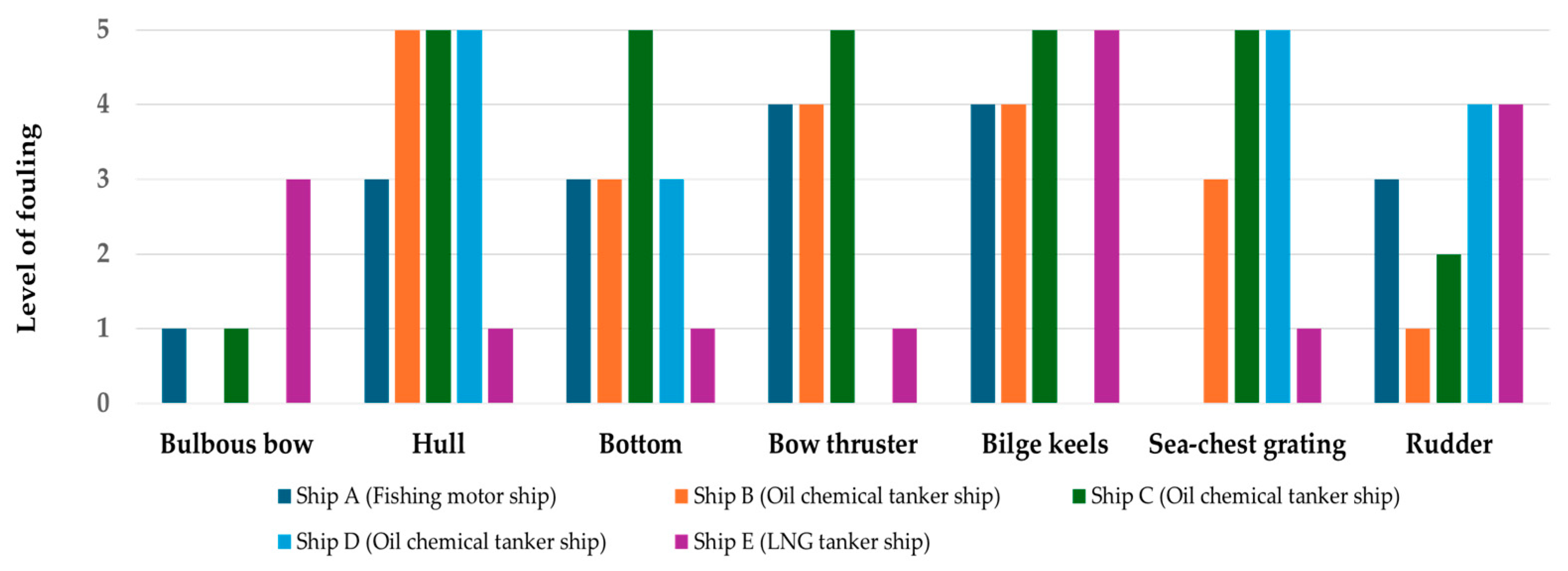
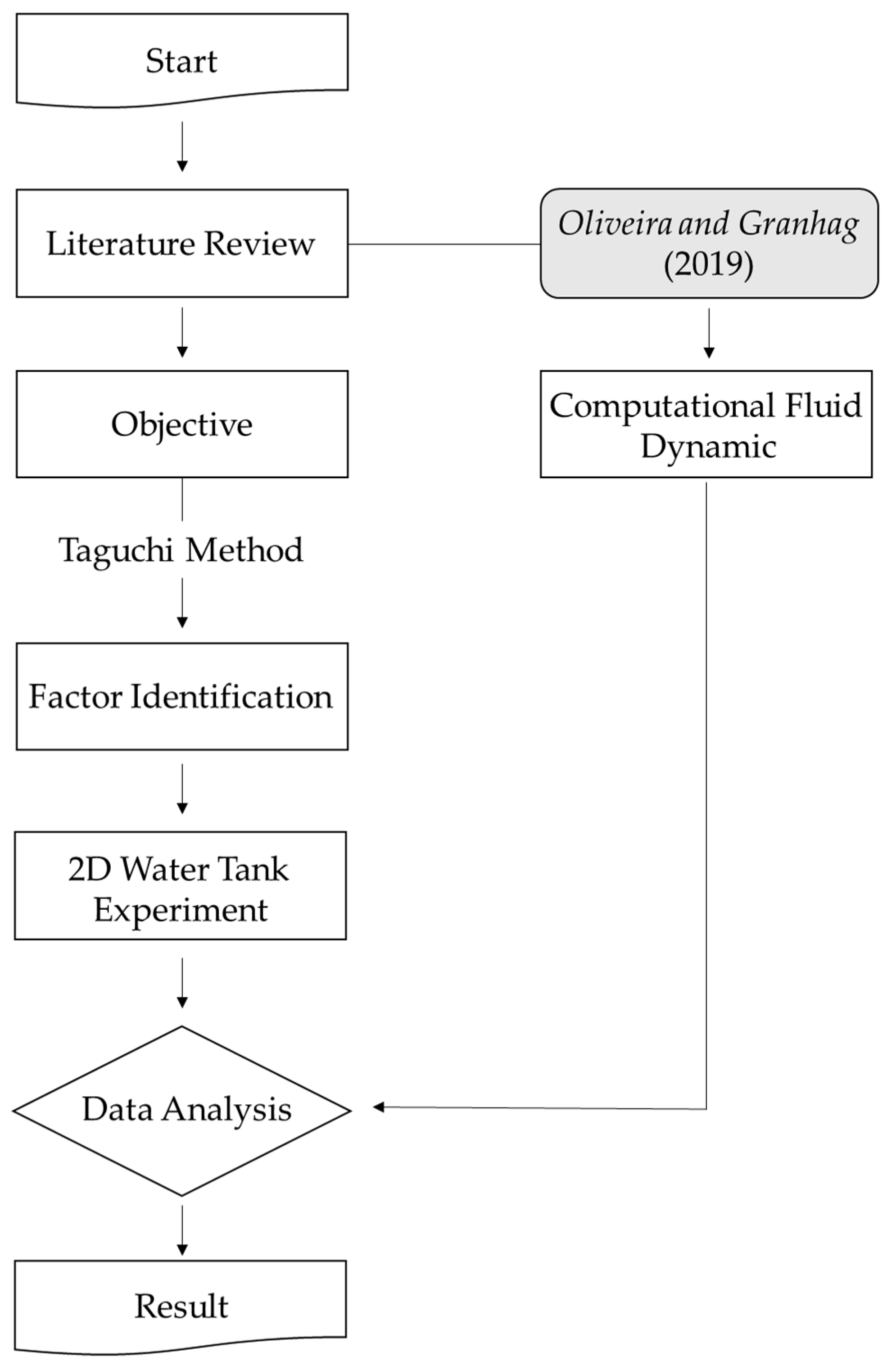



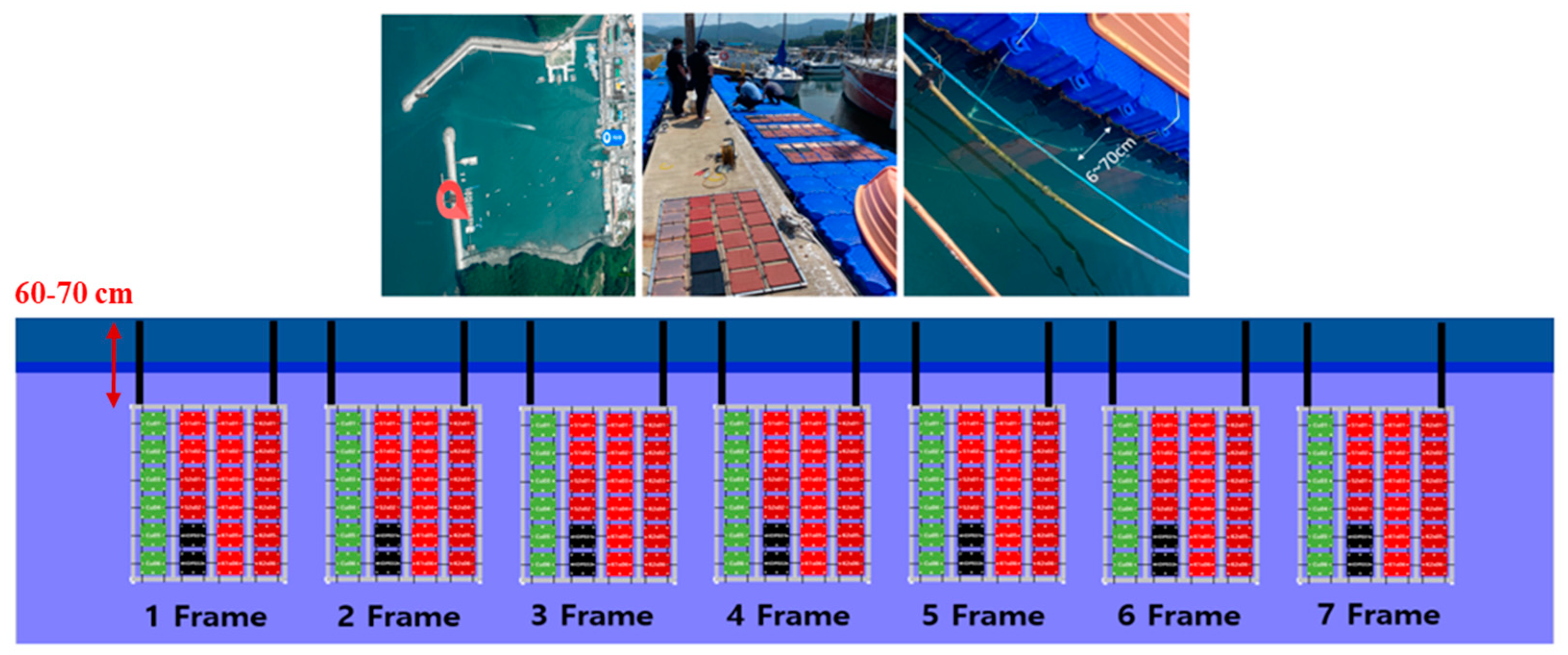


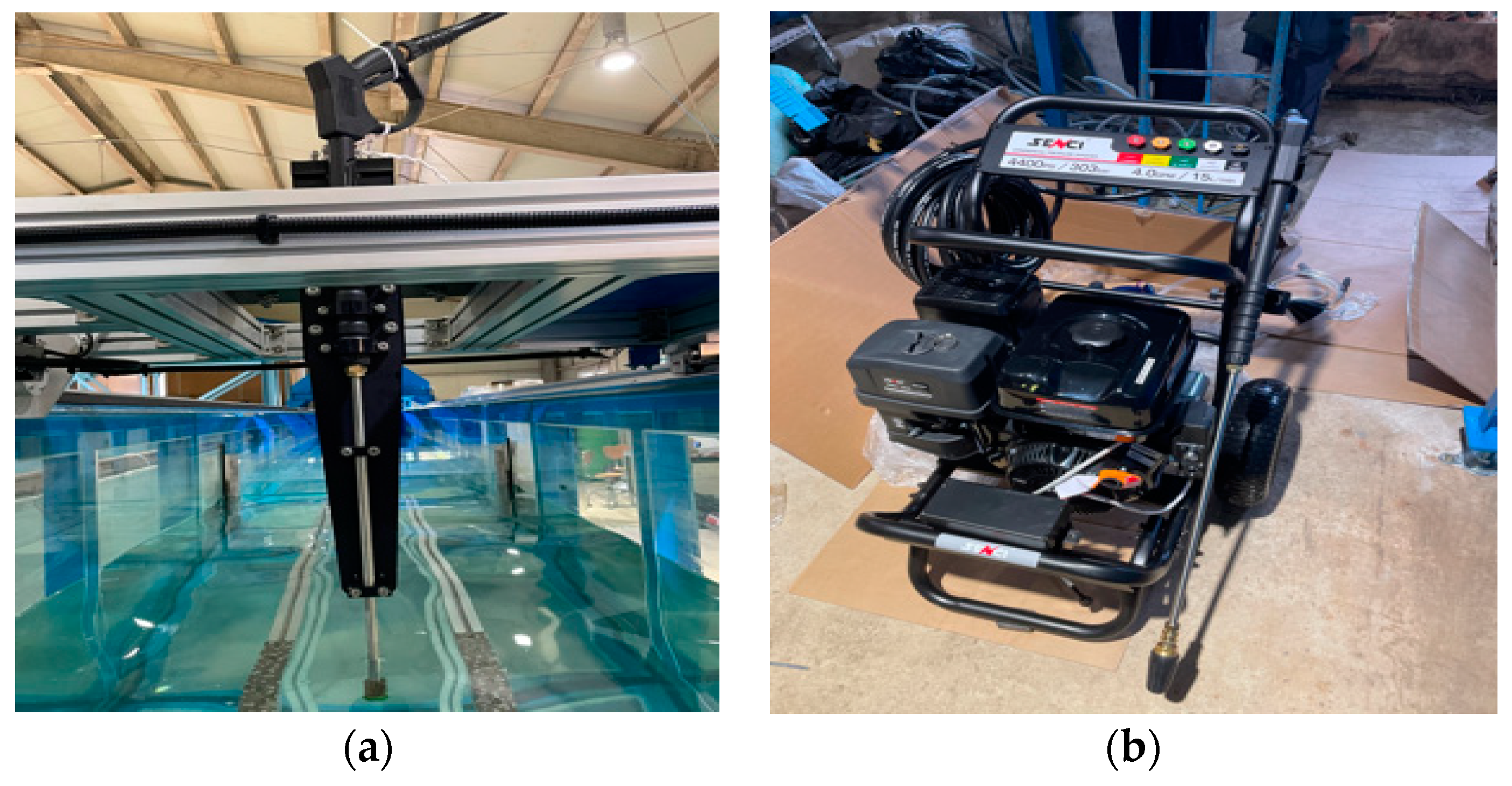
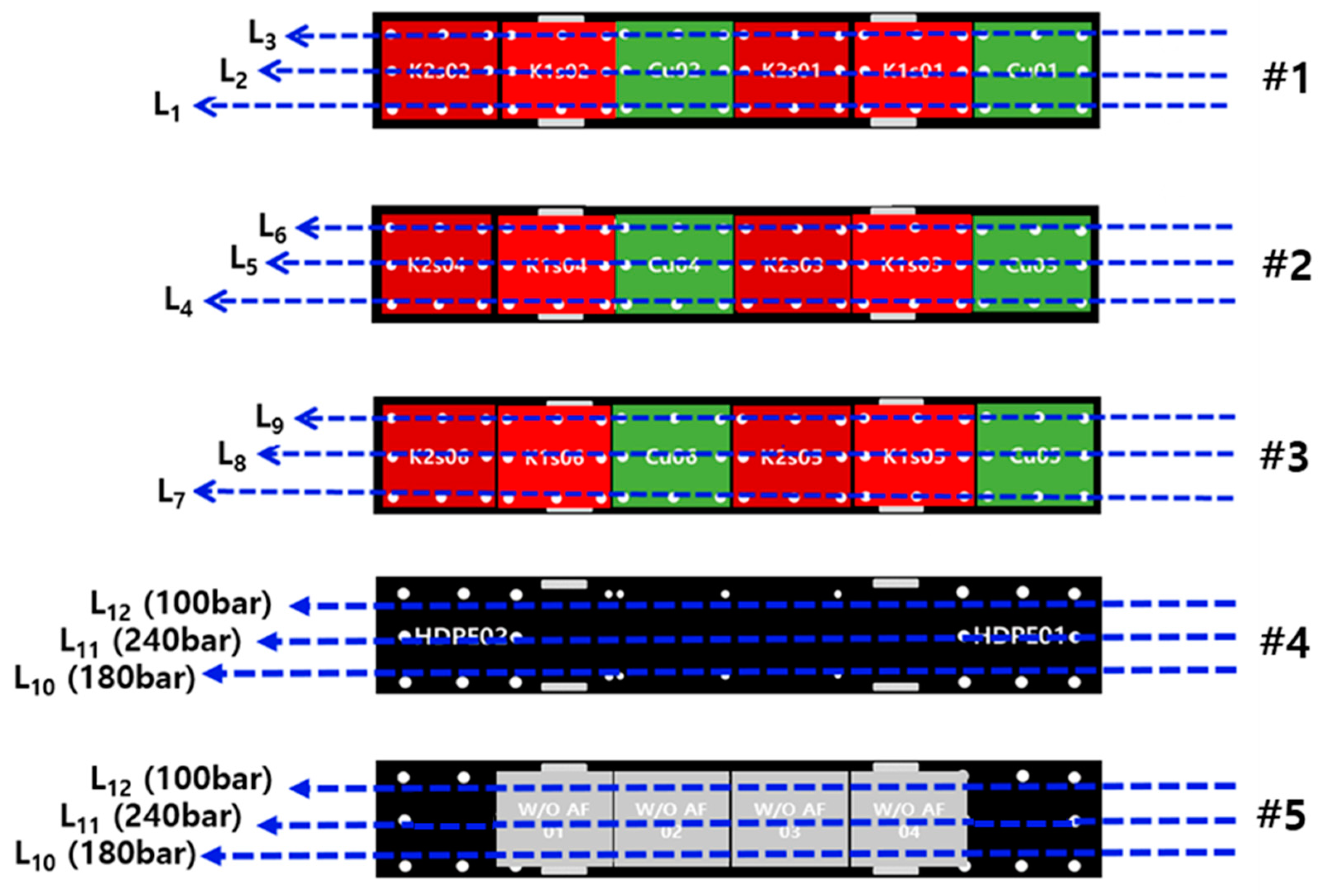

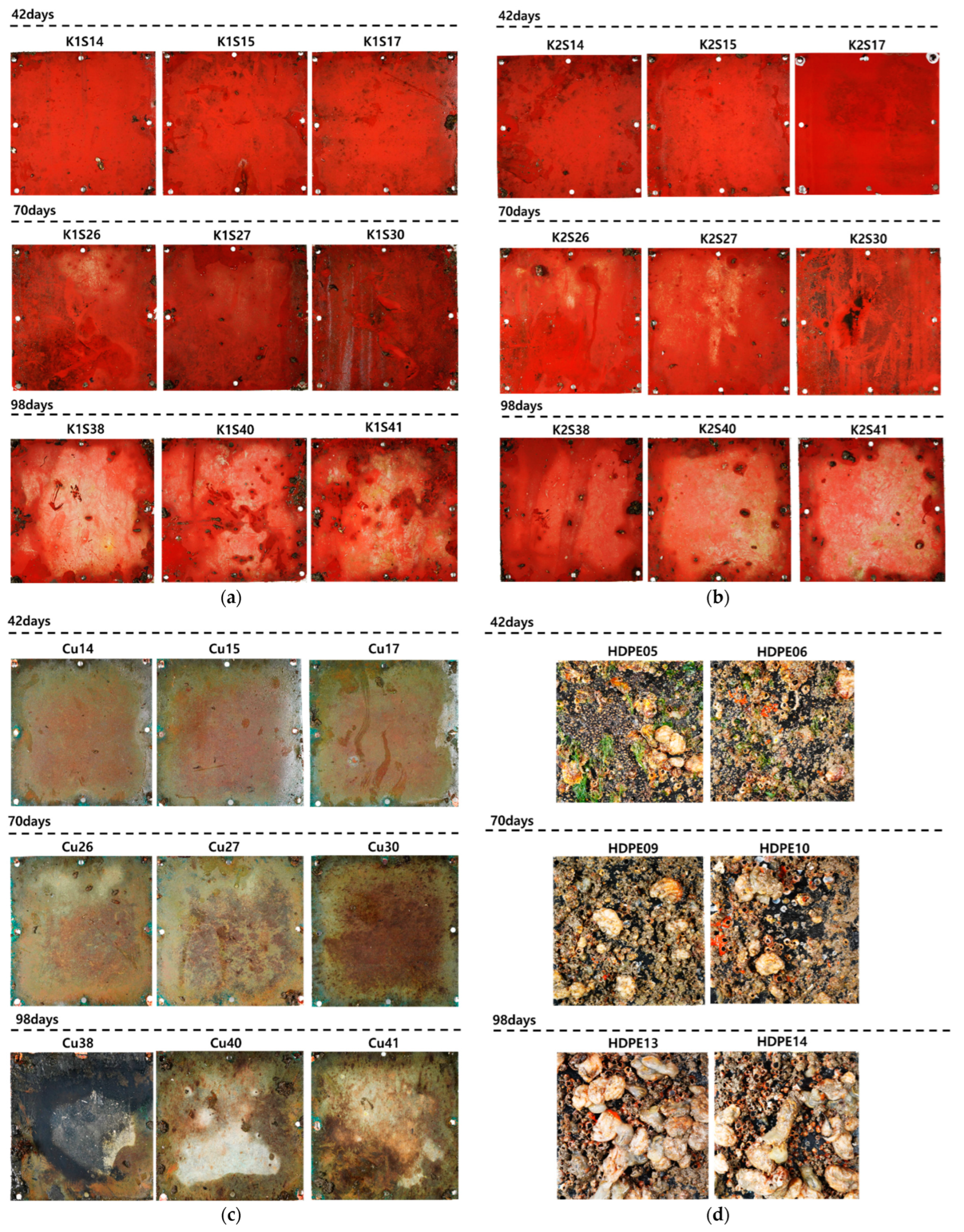
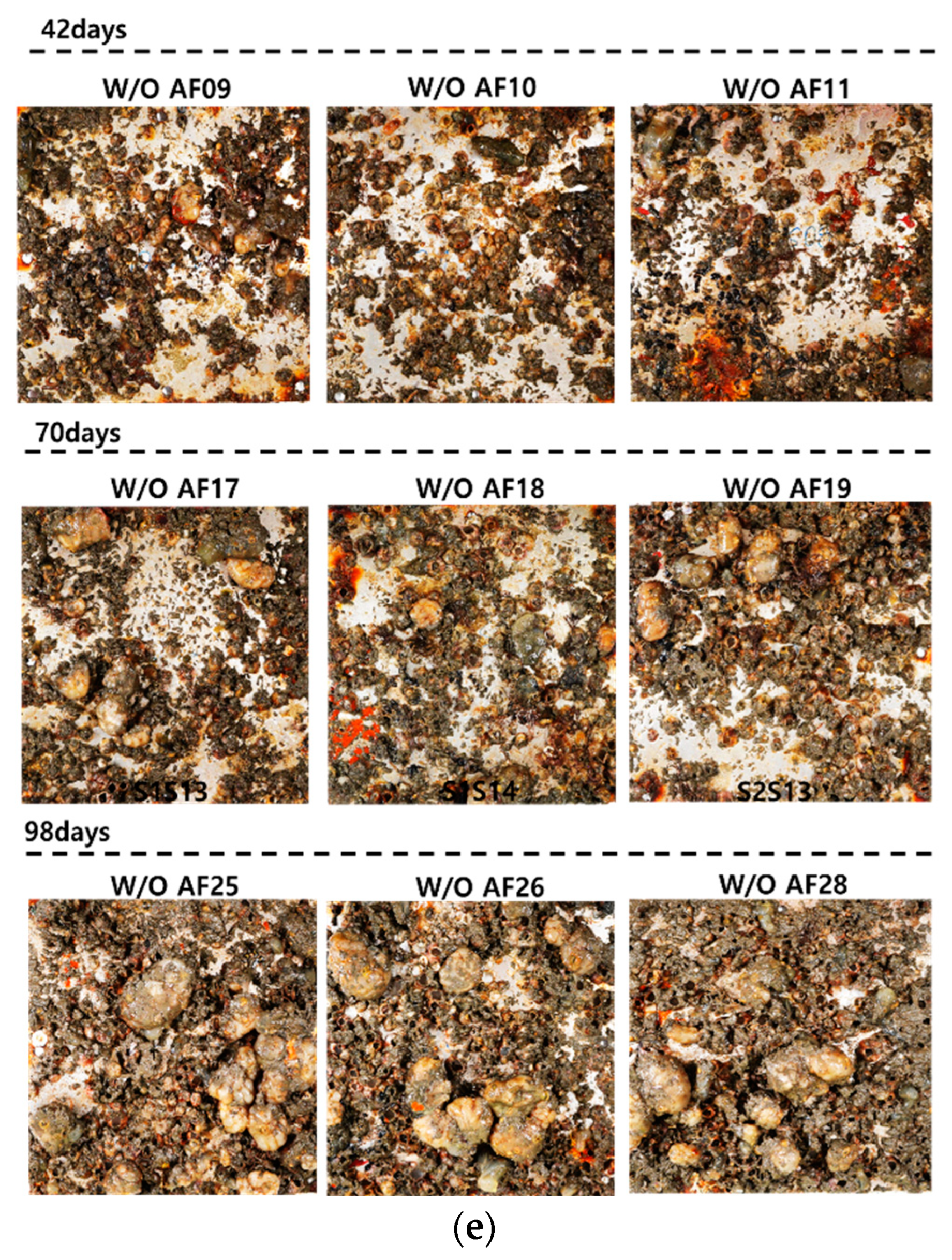
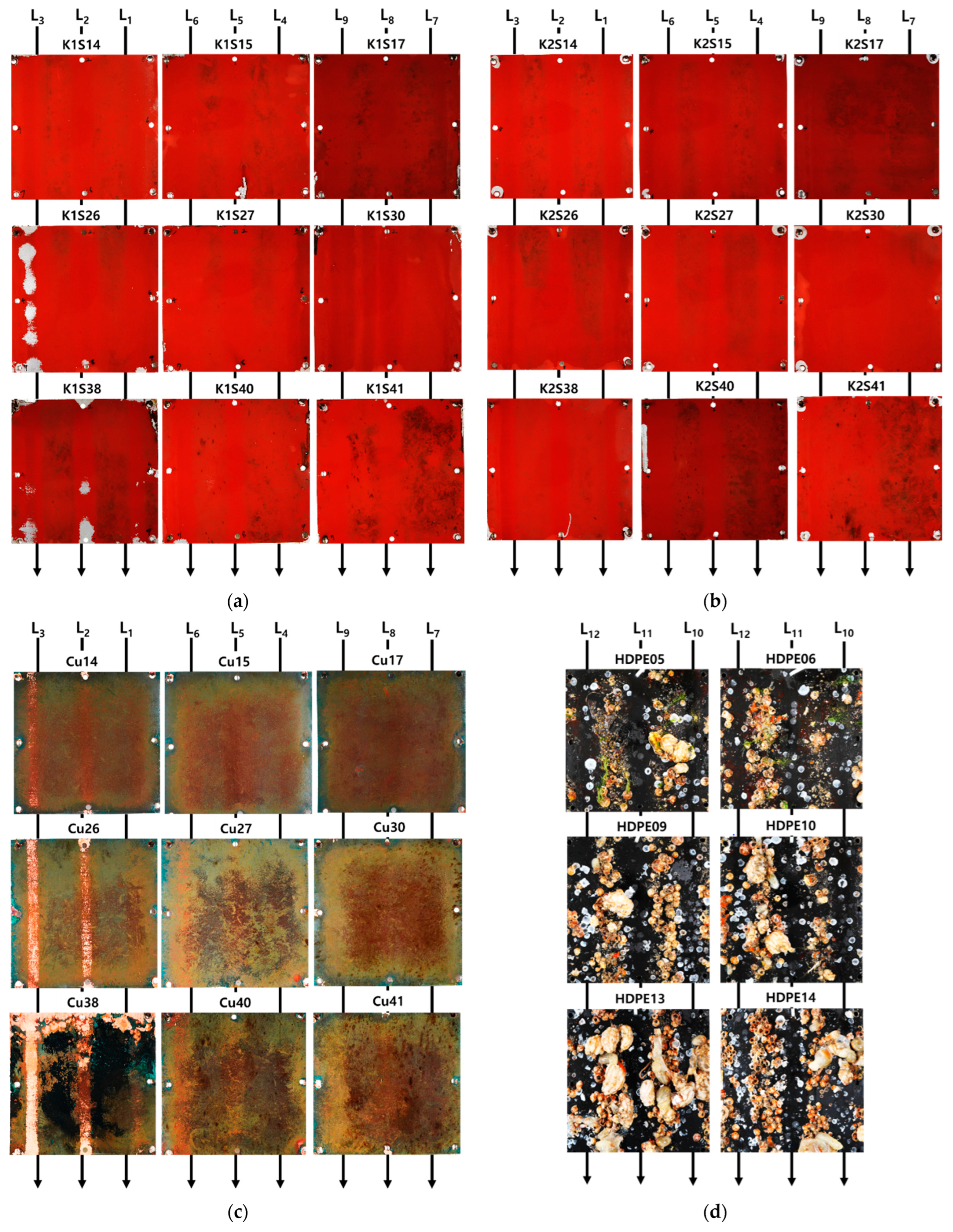

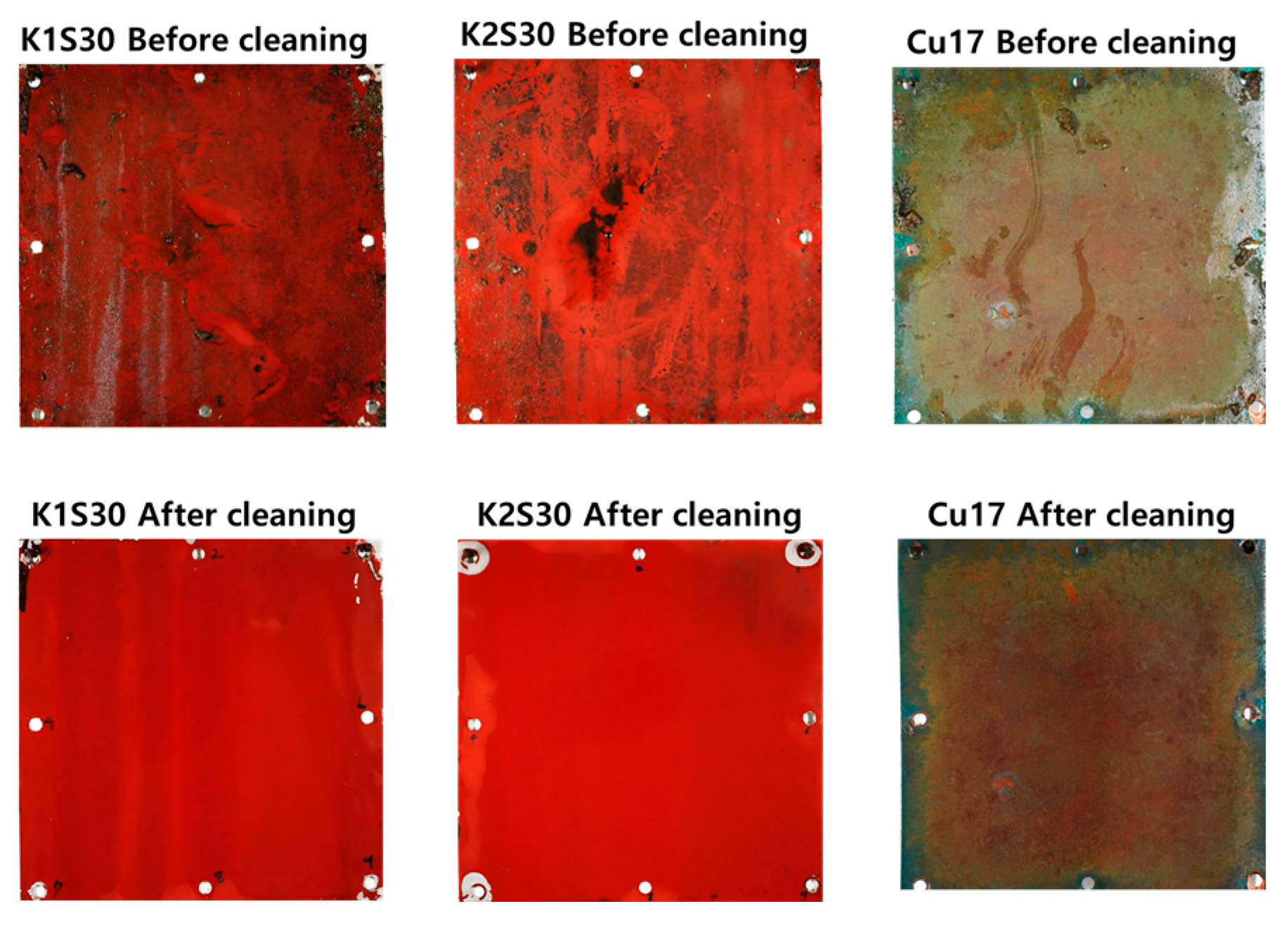
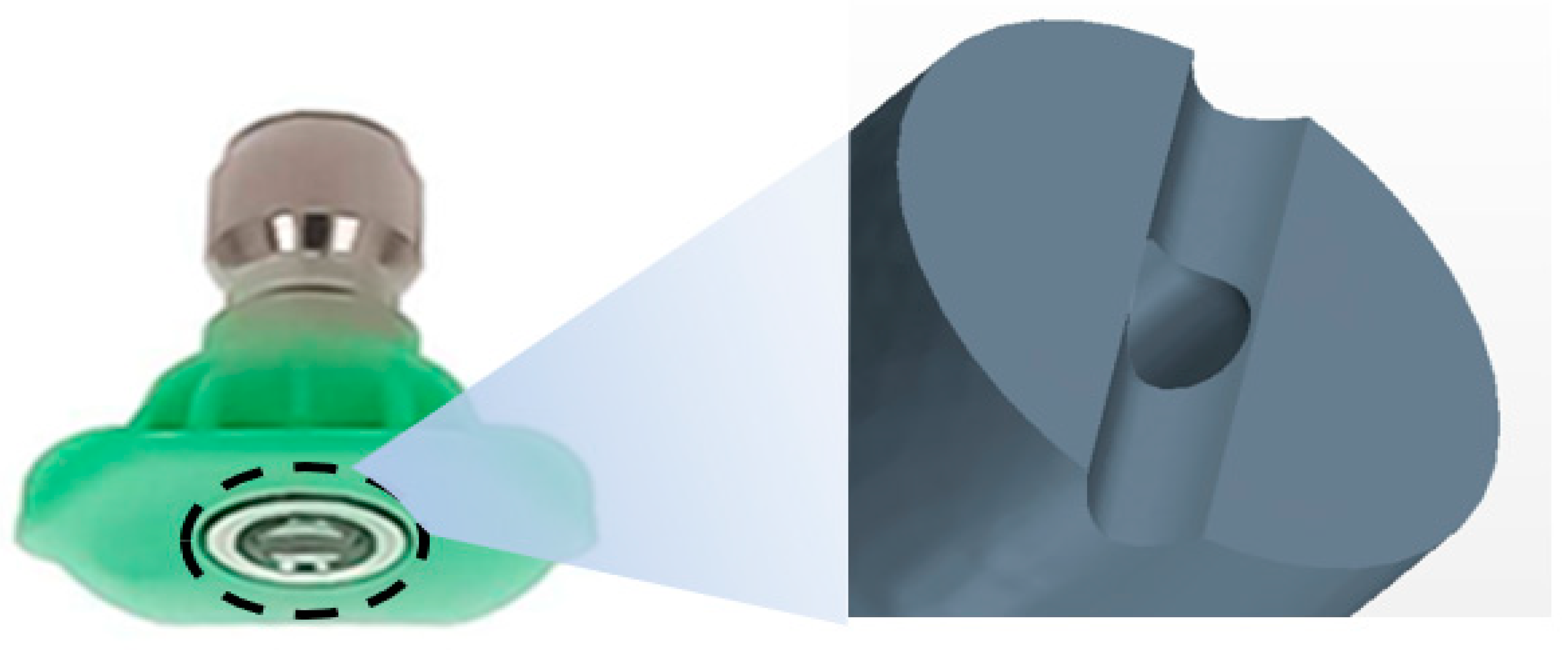


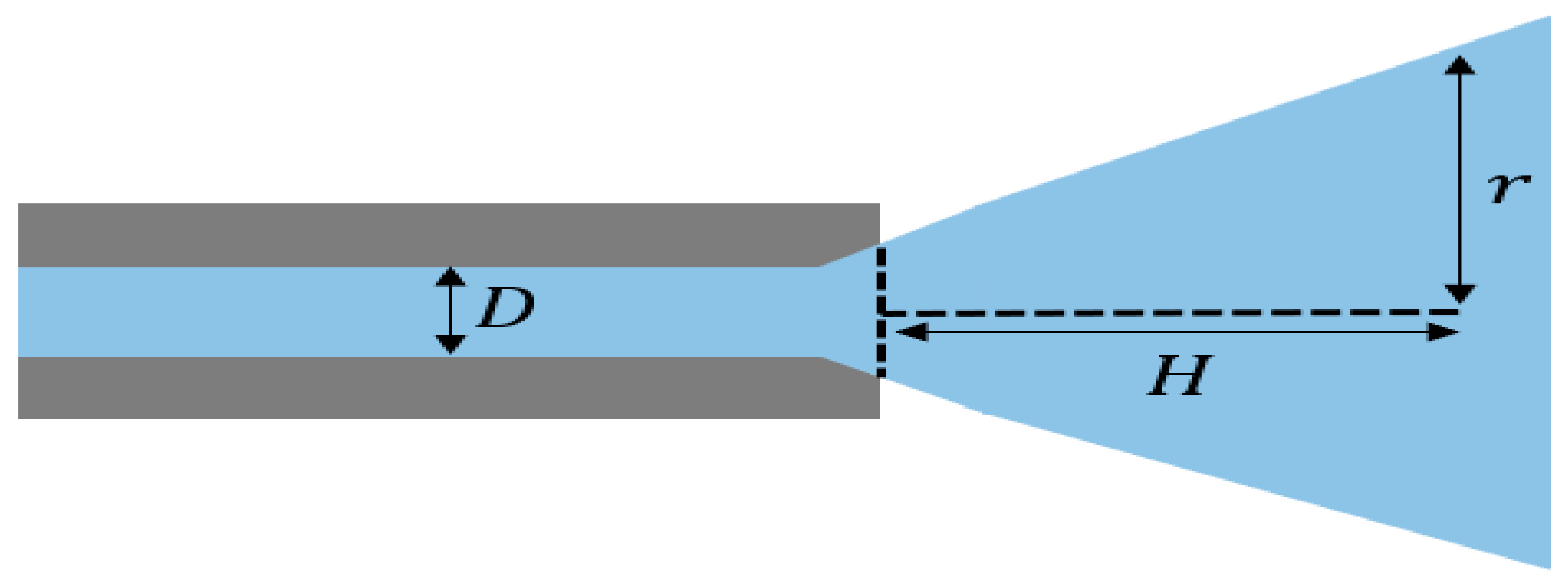
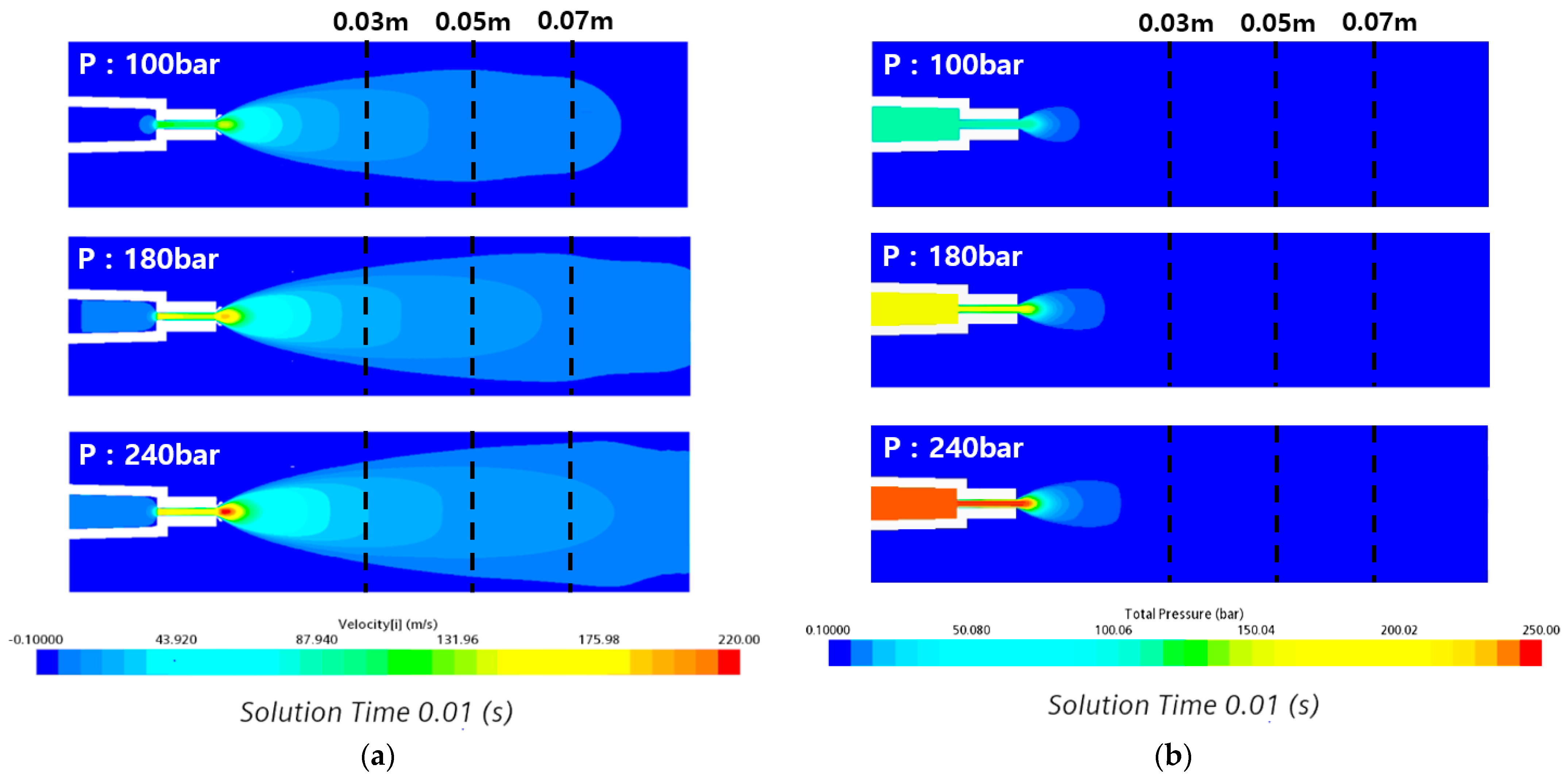
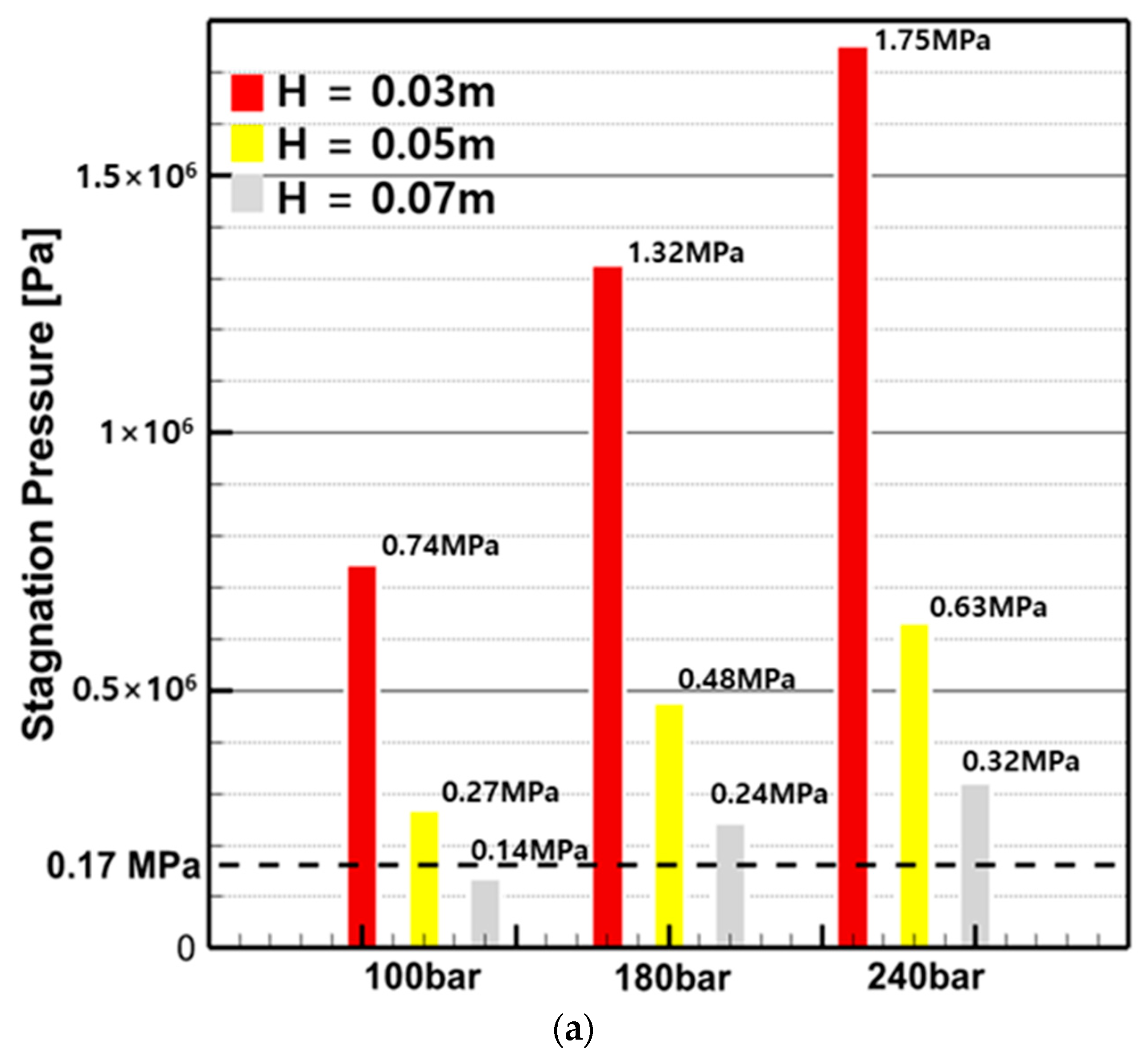
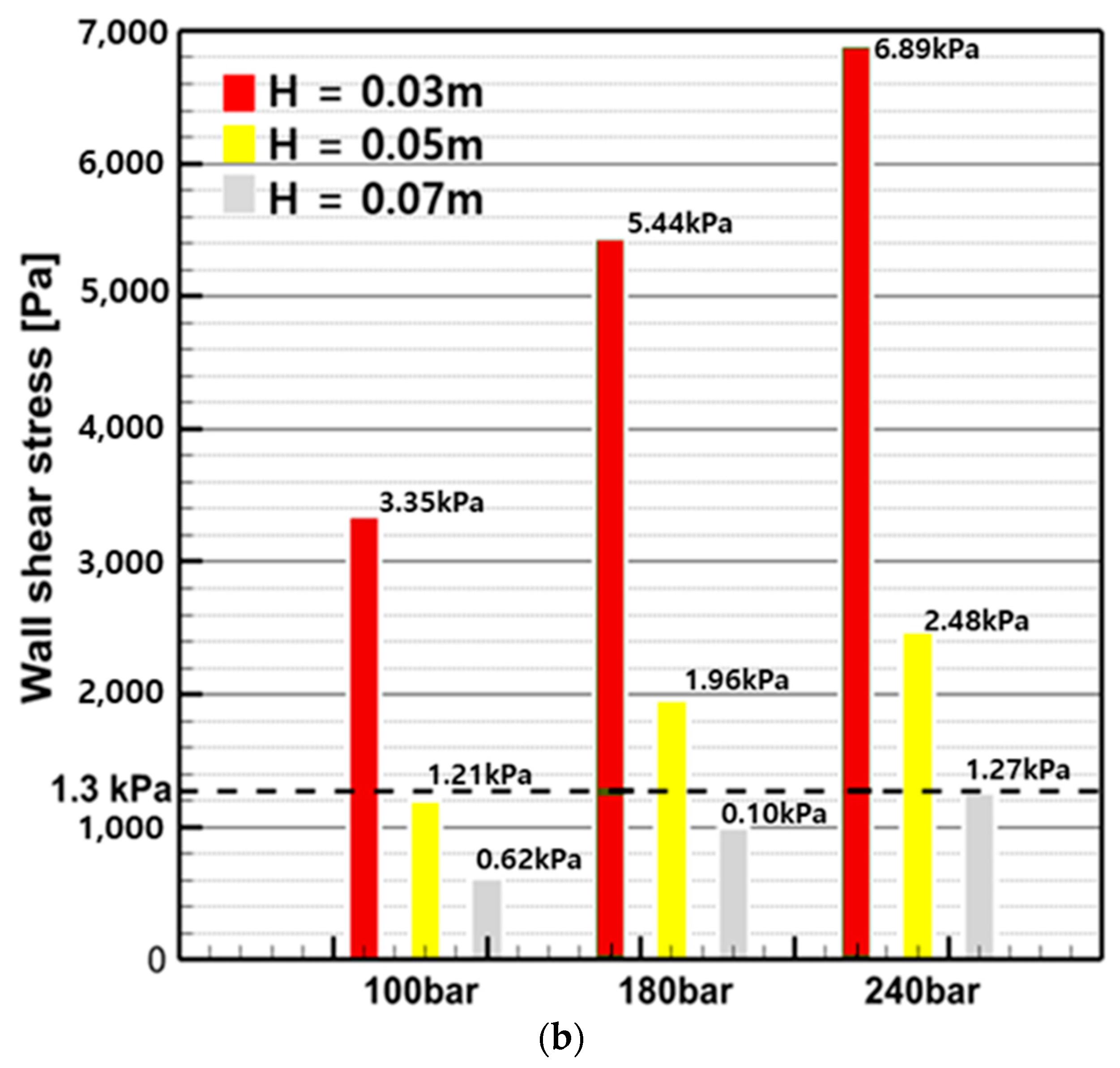
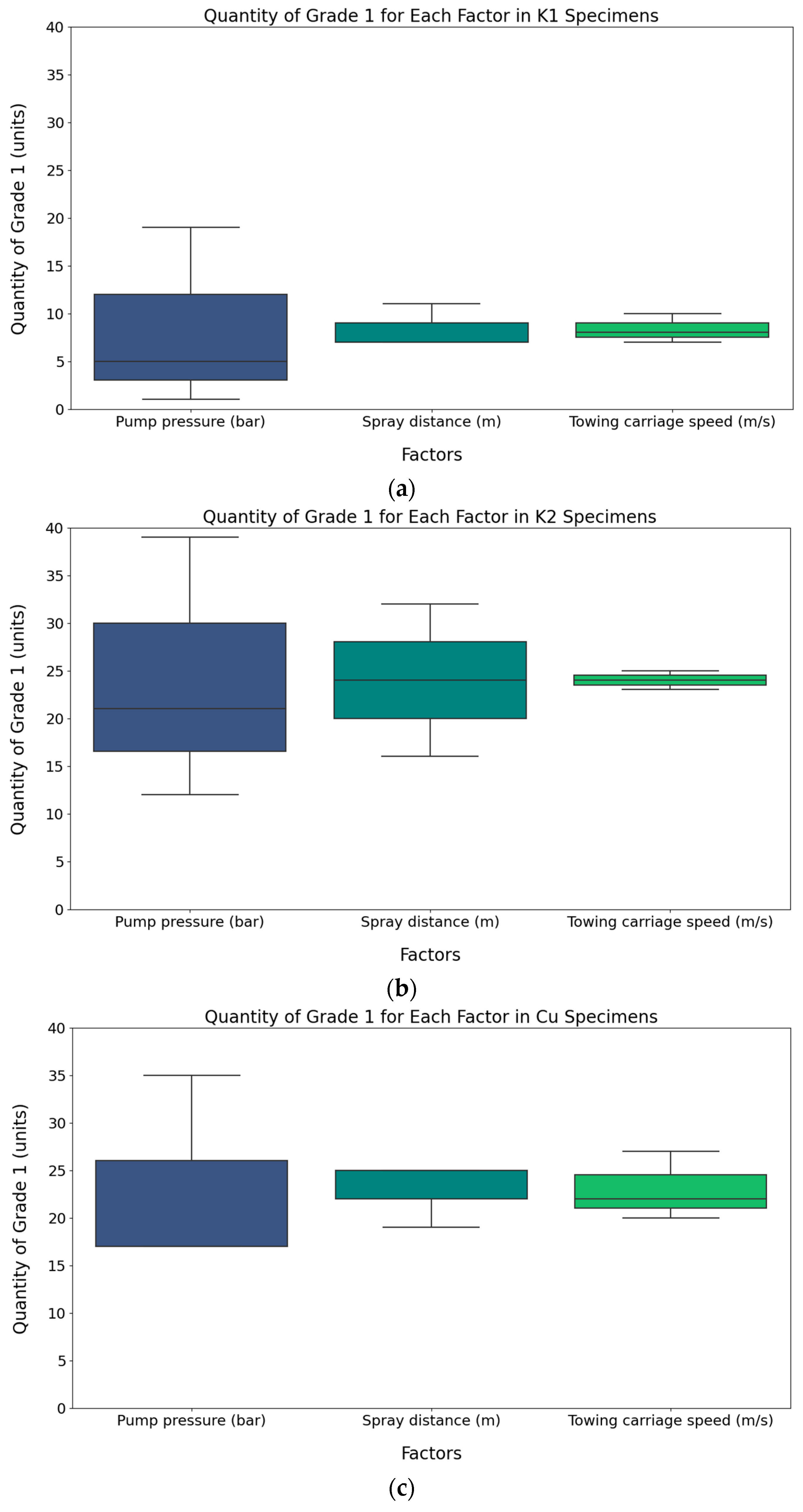
| Grade | Description | Visual Estimate of Macro-Fouling Cover of Inspected |
|---|---|---|
| 0 | No fouling Entirely clean surface with no visible bio-fouling | None |
| 1 | Micro-fouling Submerged areas partially covered in micro-fouling; absence of any macro-fouling metal and painted surface visible beneath the fouling | None |
| 2 | Heavy micro-fouling Metal and painted surface obscured; submerged areas entirely covered in micro-fouling; absence of any macro-fouling | 1–15% of surface |
| 3 | Light macro-fouling Heavy micro-fouling and multiple macro-fouling patchers; fouling species cannot be easily wiped off by hand | 6–15% of surface |
| 4 | Medium macro-fouling Heavy micro-fouling and multiple macro-fouling patchers | 16–40% of surface |
| 5 | Heavy macro-fouling Large patches or submerged areas entirely covered by macro-fouling | 41–100% of surface |
| Robot/Manufacturer | Country | Adhesion System | Cleaning System |
|---|---|---|---|
| COLLECTOR/ECOsubsea | Norway | Magnetic | Waterjet |
| Hull BUG/SeaRobotics | USA | Magnetic/Vacuum | Brush/Waterjet |
| Magnetic Hull Crawler/cybernetix | France | Magnetic | Waterjet |
| Rovingbat/ECA Group | Vacuum | Brush/Waterjet | |
| Vertidrive M-series/VertiDrive | Magnetic | Waterjet | |
| HullWiper/HullWiper | UAE | Vacuum | Waterjet |
| Factors | Levels | ||
|---|---|---|---|
| 0 | 1 | 2 | |
| X1: Towing carriage speed (m/s) | 0.2 | 0.25 | 0.3 |
| X2: Pump pressure (bar) | 100 | 180 | 240 |
| X3: Spray distance (m) | 0.03 | 0.05 | 0.07 |
| Experiment Number | Column Number | |||
|---|---|---|---|---|
| X1 | X2 | X3 | X4 | |
| L1 | 0 (0.2 m/s) | 0 (100 bar) | 0 (0.03 m) | 0 (−) |
| L2 | 0 (0.2 m/s) | 1 (180 bar) | 1 (0.05 m) | 1 (−) |
| L3 | 0 (0.2 m/s) | 2 (240 bar) | 2 (0.07 m) | 2 (−) |
| L4 | 1 (0.25 m/s) | 0 (100 bar) | 1 (0.05 m) | 2 (−) |
| L5 | 1 (0.25 m/s) | 1 (180 bar) | 2 (0.07 m) | 0 (−) |
| L6 | 1 (0.25 m/s) | 2 (240 bar) | 0 (0.03 m) | 1 (−) |
| L7 | 2 (0.3 m/s) | 0 (100 bar) | 2 (0.07 m) | 1 (−) |
| L8 | 2 (0.3 m/s) | 1 (180 bar) | 0 (0.03 m) | 2 (−) |
| L9 | 2 (0.3 m/s) | 2 (240 bar) | 1 (0.0 5 m) | 0 (−) |
| Factors | Spray Distance (m) | Water-Jet Pump Pressure (bar) |
|---|---|---|
| Case 1 | 0.03 | 100 |
| Case 2 | 0.03 | 180 |
| Case 3 | 0.03 | 240 |
| Case 4 | 0.05 | 100 |
| Case 5 | 0.05 | 180 |
| Case 6 | 0.05 | 240 |
| Case 7 | 0.07 | 100 |
| Case 8 | 0.07 | 180 |
| Case 9 | 0.07 | 240 |
| Pump Pressure (bar) | Volume Flow Rate (m3/s) | V at Tip, Experiment (m/s) | V at Tip, CFD (m/s) | Rate (%) |
|---|---|---|---|---|
| 100 | 1.55 × 10−4 | 105 | 109 | 3.7 |
| 180 | 2.04 × 10−4 | 139 | 147 | 5.4 |
| 240 | 2.34 × 10−4 | 160 | 169 | 5.3 |
| Pump Pressure (bar) | Average Flow Velocity in the Nozzle, u0 (m/s) | Reynolds Number : 1.14 × 10−6 at Water Temperature of 15 °C) |
|---|---|---|
| 100 | 77.8 | 1.36 × 105 |
| 180 | 103.8 | 1.82 × 105 |
| 240 | 119.4 | 2.09 × 105 |
| Days | K1 | K2 | Cu | HDPE | ||||
|---|---|---|---|---|---|---|---|---|
| Before | After | Before | After | Before | After | Before | After | |
| 42 days | 2–3 | 0–1 | 2–3 | 0–1 | 2 | 0–1 | 5 | 3–4 |
| 56 days | 2–3 | 0–1 | 2–3 | 0–1 | 2–3 | 0–1 | 5 | 4 |
| 70 days | 2–3 | 0–1 | 3 | 0–1 | 2–3 | 0–1 | 5 | 3–4 |
| 84 days | 3 | 0–1 | 3 | 0–1 | 3 | 0–1 | 5 | 3–4 |
| 98 days | 3 | 0–1 | 3 | 0–1 | 3 | 0–1 | 5 | 3–4 |
| Factors | Values | Quantity of Grade 1 after Cleaning |
|---|---|---|
| Pump pressure (bar) | 100 | 1 |
| 180 | 5 | |
| 240 | 19 | |
| Spray distance (m) | 0.03 | 7 |
| 0.05 | 11 | |
| 0.07 | 7 | |
| Towing carriage speed (m/s) | 0.2 | 10 |
| 0.25 | 8 | |
| 0.3 | 7 |
| Factors | Values | Quantity of Grade 1 after Cleaning |
|---|---|---|
| Pump pressure (bar) | 100 | 12 |
| 180 | 21 | |
| 240 | 39 | |
| Spray distance (m) | 0.03 | 32 |
| 0.05 | 16 | |
| 0.07 | 24 | |
| Towing carriage speed (m/s) | 0.2 | 23 |
| 0.25 | 25 | |
| 0.3 | 24 |
| Factors | Values | Quantity of Grade 1 after Cleaning |
|---|---|---|
| Pump pressure (bar) | 100 | 17 |
| 180 | 17 | |
| 240 | 35 | |
| Spray distance (m) | 0.03 | 25 |
| 0.05 | 19 | |
| 0.07 | 25 | |
| Towing carriage speed (m/s) | 0.2 | 22 |
| 0.25 | 20 | |
| 0.3 | 27 |
Disclaimer/Publisher’s Note: The statements, opinions and data contained in all publications are solely those of the individual author(s) and contributor(s) and not of MDPI and/or the editor(s). MDPI and/or the editor(s) disclaim responsibility for any injury to people or property resulting from any ideas, methods, instructions or products referred to in the content. |
© 2024 by the authors. Licensee MDPI, Basel, Switzerland. This article is an open access article distributed under the terms and conditions of the Creative Commons Attribution (CC BY) license (https://creativecommons.org/licenses/by/4.0/).
Share and Cite
Ahn, J.; Yan, K.; Bazher, S.A.; Oh, J.; Seo, D.; Cho, S.-g.; Kim, H. Evaluation of Influencing Factors in Cleaning Performance for Bio-Fouling Removal Based on High-Pressure Water Jets. J. Mar. Sci. Eng. 2024, 12, 1086. https://doi.org/10.3390/jmse12071086
Ahn J, Yan K, Bazher SA, Oh J, Seo D, Cho S-g, Kim H. Evaluation of Influencing Factors in Cleaning Performance for Bio-Fouling Removal Based on High-Pressure Water Jets. Journal of Marine Science and Engineering. 2024; 12(7):1086. https://doi.org/10.3390/jmse12071086
Chicago/Turabian StyleAhn, Jaehyeon, Kaicheng Yan, Salim Abdullah Bazher, Jungkeun Oh, Daewon Seo, Su-gil Cho, and Hyungwoo Kim. 2024. "Evaluation of Influencing Factors in Cleaning Performance for Bio-Fouling Removal Based on High-Pressure Water Jets" Journal of Marine Science and Engineering 12, no. 7: 1086. https://doi.org/10.3390/jmse12071086
APA StyleAhn, J., Yan, K., Bazher, S. A., Oh, J., Seo, D., Cho, S.-g., & Kim, H. (2024). Evaluation of Influencing Factors in Cleaning Performance for Bio-Fouling Removal Based on High-Pressure Water Jets. Journal of Marine Science and Engineering, 12(7), 1086. https://doi.org/10.3390/jmse12071086






